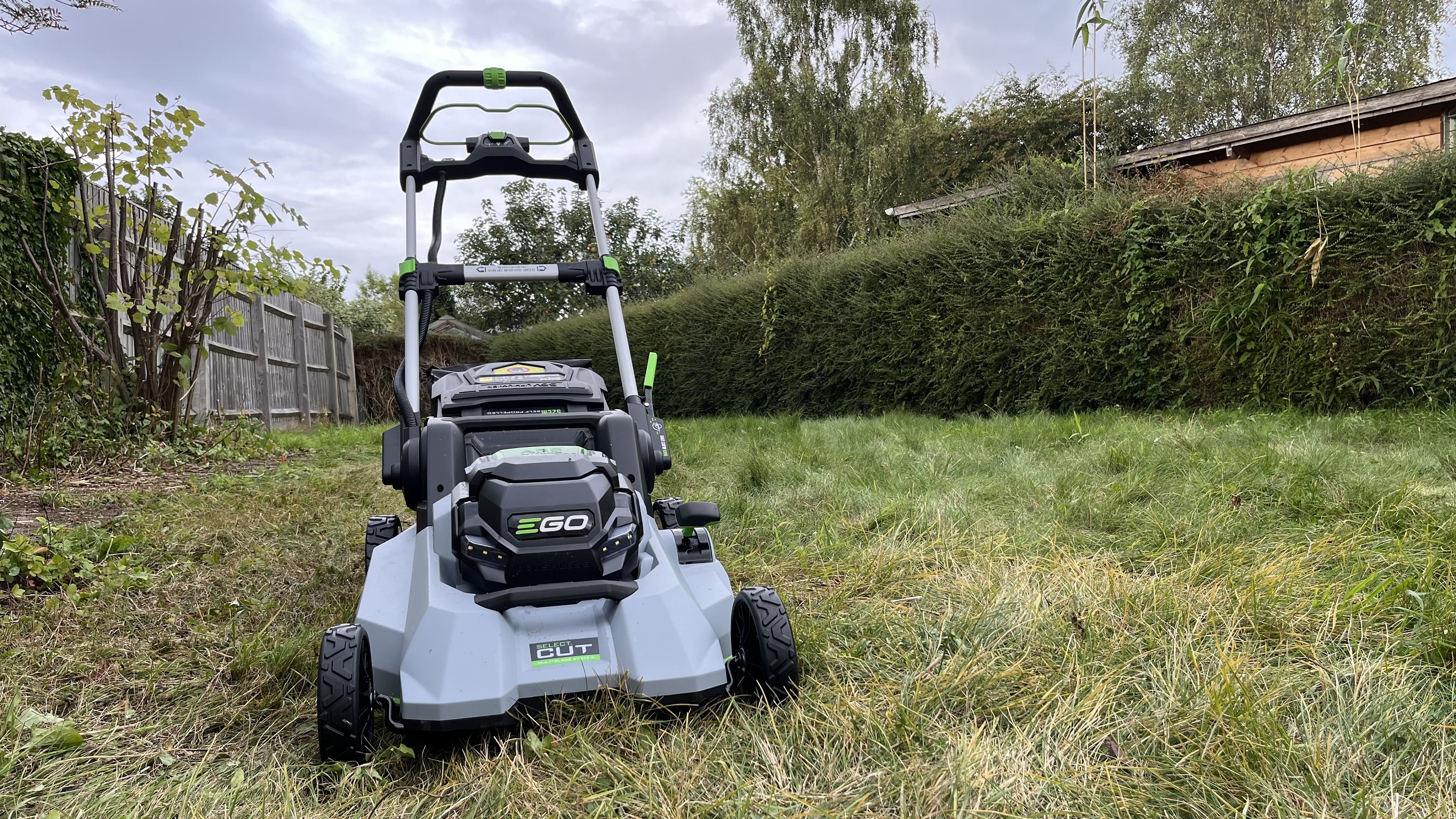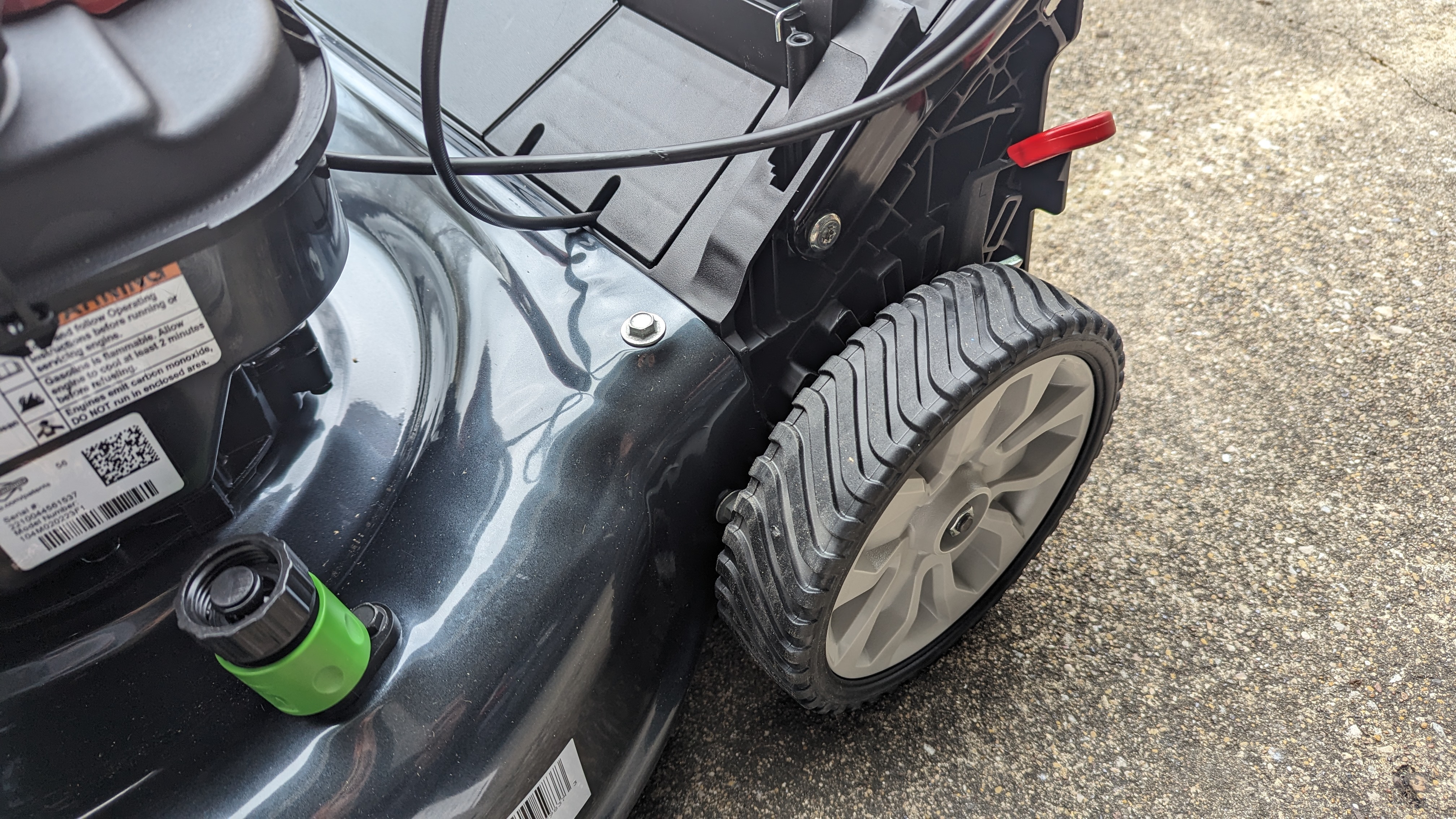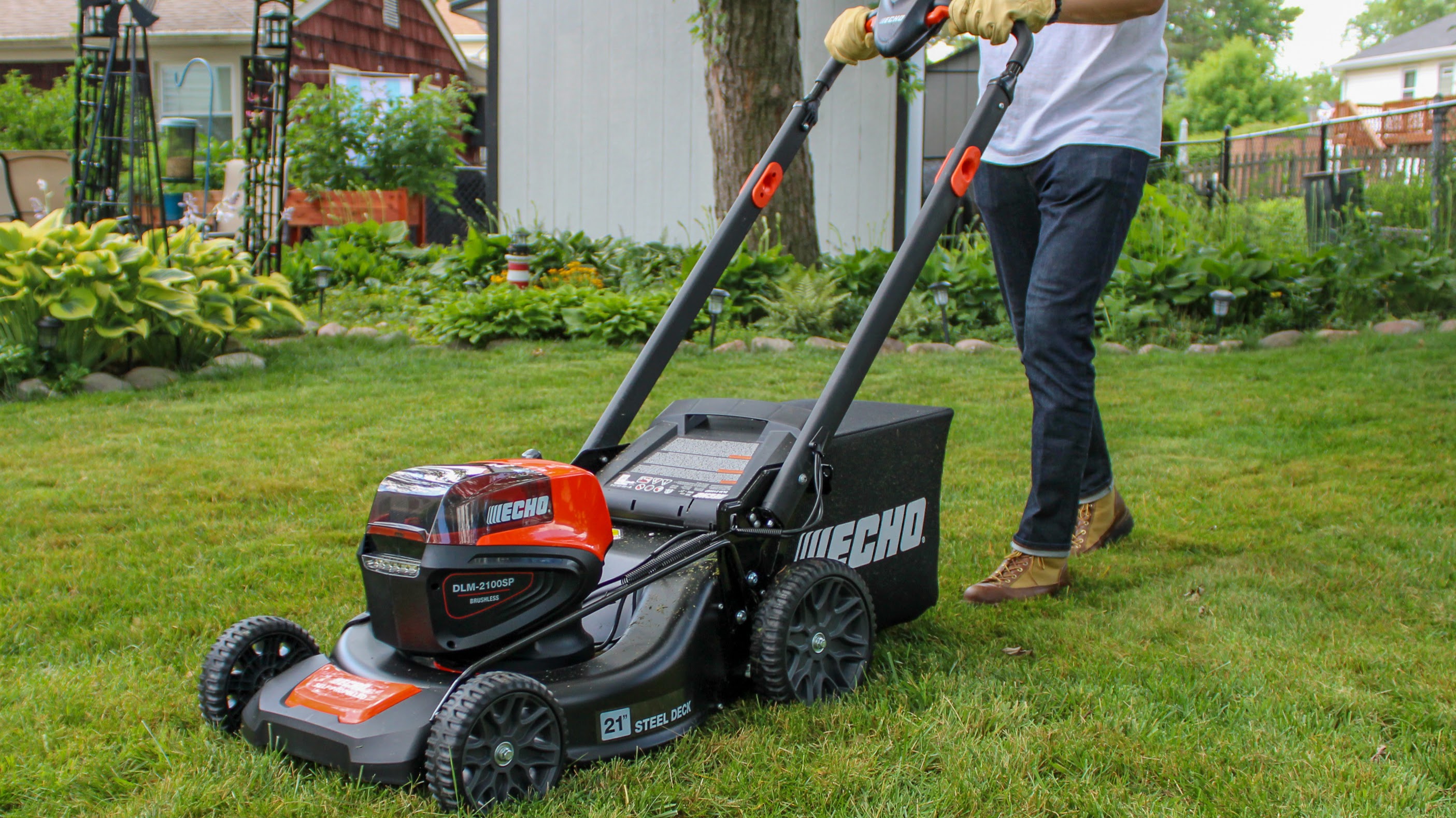
Self-propelled lawn mowers take some of the effort out of mowing, by delivering the power needed to move themselves forward. Where a push mower must be pushed, a model with self-propulsion only needs to be steered as it drives along.
Some of the very best cordless lawn mowers are self-propelled, including the EGO Power+ LM2135SP,the Husqvarna Lawn Xpert LE-322 and the ECHO DLM 2100-SP. There are some great self-propelled options for folk who prefer a gas mower too – including the Troy-Bilt TB310B, which was the best-performing model in testing for our best lawn mowers roundup.
Are self-propelled lawn mowers worth it?
The idea behind self-propelled mowers originated in the 1920s, when Ideal Power Lawn Mower Co. launched the revolutionary “Triplex” ride-on mower with self-propulsion. Soon applied to walk-behind mowers, that concept has clearly made mowing easier for many users – otherwise, we wouldn’t still be talking about self-propelled lawn mowers a century later.
“Self-propelled mowers reduce some of the physical effort needed to mow your lawn, making them ideal for homeowners with larger properties, landscaping islands, or hilly terrain,” says ECHO’s Jason Wilk.
“These mowers assist in guiding themselves through obstacles with little effort from the user.”
With all that said, self-propelled mowers have their downsides. Here are the key pros and cons to bear in mind, if you’re thinking of making your next mower a self-propelled model.
Self-propelled lawn mowers: the pros
1. Easy mowing on any terrain
For those whose lawns have steep gradients or a bumpy profile, getting a self-propelled lawn mower would likely be worthwhile.
Ordinary push mowers (like the Greenworks 80V 21" Brushless Cordless (Push) Lawn Mower for $499.99 on Amazon) are well-equipped for mowing a flat lawn – but when they encounter difficult terrain, you’ll need to put in a lot of concentration and physical effort to mow these areas neatly. For many users, this can make mowing impractical, or perhaps even dangerous.
A good self-propelled lawn mower uses power from its engine or one of its motors (there are often two) to safely drive up or down slopes as steep as 25% (or 15°). Any steeper than that, and you might need to use an alternative tool such as a string trimmer.
Even on flat ground, a self-propelled mower requires far less effort to steer than a push mower – a big advantage for any user, and especially for those with large lawns or who struggle physically with hard labor.
“Mowing becomes much easier and less physically strenuous with this option,” says Jason.
“However, some people prefer to use weekly lawn mowing as a form of exercise. For those individuals, a push model would still be an excellent choice.”
2. Options to suit different needs
There are some important differences among self-propelled mowers, making certain models better suited to specific lawns or users.
A key point of difference is the drive system. Some self-propelled mowers have all-wheel drive, which is great for lawns with challenging terrain, but uses more energy and comes at a higher cost. Others have front-wheel drive or rear-wheel drive, both of which offer adequate power and traction for the average lawn.
Another useful self-propelled feature mower is variable speed, which means you can adjust the speed of propulsion. Users who are less mobile can use a slower setting, while those in a hurry can mow at maximum speed.
Self-propelled mowers generally cost more than otherwise similar push mowers. Not only does that extra spend get you self-propulsion – it usually brings some useful premium features too, such as adjustable cutting height, fold-away handles, and electric activation (for gas-powered models).
Check a self-propelled mower’s specs to ensure it has all the features you need, before you buy.

3. Even, accurate mowing
You might wonder why we’ve included this point. After all, self-propulsion does not directly influence a mower’s cutting action; it simply affects how the mower itself moves.
The reason why self-propelled mowers can, in fact, produce a more even and accurate cut is that they make mowing easier for the user. There’s less need to physically maneuver the mower, and it can therefore travel more smoothly.
With a push mower, you’ll exert effort pushing and pulling – especially if you need to wrestle the mower over bumpy ground or up steep slopes. A self-propelled model does a lot of that work for you, which means you can focus on perfect steering.
Self-propelled lawn mowers: the cons
There aren't many downsides to a self-propelled mower, but we suggest you consider the following potential drawbacks, before you commit to a lawn mower of this type.
1. Less control in tight spaces
When it comes to mowing large, unobstructed areas of lawn, you can’t beat a self-propelled mower.
However, when mowing around obstacles or in tight spaces, self-propulsion can be a disadvantage. The automatic forward movement of the mower makes it difficult to slow down when you need to navigate carefully in an awkward corner of the lawn, and this can sometimes lead to collisions or messy mowing.
Even if you can turn off the self-propulsion feature, mowers of this type may be tricky to use in challenging areas of the lawn, as they are relatively heavy due to their extra components. The best solution is to avoid mowing intricate areas with your self-propelled mower, and tidy them up later with a string trimmer instead.
2. Higher energy consumption
Practically all of the energy consumption of a regular push lawn mower goes into turning its cutting blade. A self-propelled mower is different, as the drive system uses a significant amount of energy too. That means more fuel is used if the mower is gas-powered, or more charge if it is a cordless electric model.
The problems with higher power consumption are twofold: first, you’ll spend more money on fuel or electricity; and second, there’s a higher risk that the mower will run out of power before you’ve finished mowing the lawn.
Of course, the higher energy consumption of a self-propelled mower does bring its benefits. For many users, the physical effort saved will more than make up for the extra spend on powering the mower.

3. Price
It should come as no surprise that self-propelled lawn mowers usually cost more than push mowers that are similar in terms of cutting width, power (blade RPM) and other key specifications.
“The only downside of the self-propelled features is the additional cost,” says Jason.
“On average, the self-propelled feature adds an additional $100 to the price compared to a similar push model without it,” says Jason.
You’ll see this for yourself when you compare lawn mower prices online. For example, the self-propelled EGO Power+ LM2135SP 21-Inch Select Cut Lawn Mower (Tool Only) is $549 (Lowe’s), while the similar, push-powered EGO POWER+ 56-volt 21-in Cordless Push Lawn Mower (Tool Only) costs $399 (Lowe’s).
If you shop around, you can find a very good self-propelled mower at a more accessible price point. For instance, the ECHO eFORCE 56-Volt 21 in. Cordless Battery Walk Behind Self-Propelled Lawn Mower (Tool Only) is $449.99 (Home Depot) – although you’ll need to pay extra for the batteries and charger.
If you’re working with a generous budget, then spending that extra money on self-propulsion is ultimately going to buy you easier mowing in the long run. Otherwise, you’ll need to decide whether self-propulsion is worth the financial stretch.

Verdict: Are self-propelled lawn mowers worth it?
As we’ve seen, self-propelled lawn mowers can bring benefits to just about any lawn and user. These effort-saving machines are certainly worth the investment for buyers whose lawn has bumpy or sloping terrain, and they’re a must-have for those who struggle with the physical effort of using a push mower.
Sure, self-propelled mowers cost more, and they use a little more energy. But if you love your lawn and want to focus on controlling your mower to cut grass perfectly, rather than putting all your effort into moving it forwards, then a self-propelled model will be a highly rewarding purchase in the long term.
If you’ve decided you’d like to go ahead and choose a self-propelled lawn mower, but may not have the budget to stretch to one, we're tracking lawn mower deals throughout the year so you may be in luck that you find one with a deep discount sooner than you were expecting. Pro tip: Amazon Prime Day and Black Friday are worth holding out for.
Follow our green lawn care tips – from mowing to scarification and lawn feeding – to get the very best out of the verdant oasis in your own backyard.







